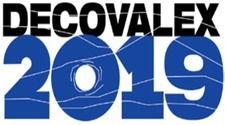
The international DECOVALEX (DEvelopment of COupled models and their VALidation against Experiments) research project has been at the forefront of advancing the understanding of coupled thermal-hydrological-mechanical-chemical-gas (THMCG) processes in support of the safe geological disposal of radioactive wastes since 1992. Quintessa is developing and applying models for two tasks in the current phase (DECOVALEX-2019) on behalf of the Radioactive Waste Management Limited (RWM). In addition, Alex Bond has been appointed as the Technical Secretary (a scientific coordinator role) for DECOVALEX-2019.
The working method pursued by DECOVALEX utilises a number of tasks that consider various different THMCG interactions (e.g. H-M, T-H-M). Each task is undertaken by a number of modelling teams; a key benefit of DECOVALEX is the resulting interaction between modelling teams - presenting current results, discussing methodologies pursued and understanding differences in modelling approach and software abilities - in an open and collaborative manner. This serves to enhance task progression and modelling team capability, and adds to the knowledge and experience base that can be drawn on in subsequent related work as necessary for national radioactive waste programmes.
Alex Bond participated in the first DECOVALEX-2019 workshop held at the Lawrence Berkeley National Laboratory in May and discussed Quintessa’s planned modelling of the following two tasks.
- Task A on advective gas movement through artificial and natural clays, which is being led by the British Geological Survey; and
- Task E on up-scaling Thermo-Hydro-Mechanical modelling for Callovo-Oxfordian claystone, led by Andra.
This work builds on Quintessa’s successful participation in two earlier phases (DECOVALEX-2015 and DECOVALEX-2011). For example, two papers on the modelling of sealing experiments (SEALEX) at the Tournemire underground research laboratory arising from DECOVALEX-2015 have recently been published.